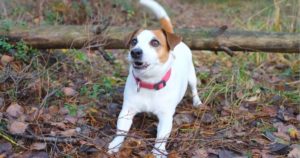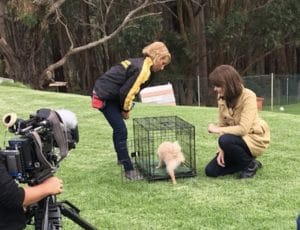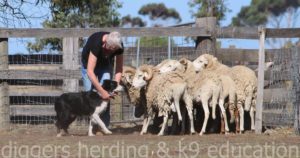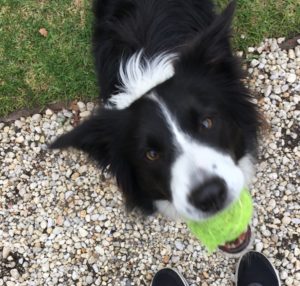
Dogs with anxiety can suffer from chronic stress, which decreases their quality of life and leads to many common dog behaviour problems, so understanding anxiety in dogs, its causes and treatments is critical.
Anxiety traits can include noise sensitivity and phobias, separation related behaviour, commonly known as separation anxiety, fear of different surfaces and heights, a lack of impulse control, compulsive disorders, car travel anxiety and more.
In a recent study out of Finland, over 72% of dogs had some kind of highly problematic behaviour as result of anxiety, with the most common problems associated with anxiety in dogs including excessive barking, inappropriate elimination, destructiveness, aggression and fearfulness. It is also a major reason for many dogs being relinquished to animal shelters or euthanised.
Behaviour has a genetic or inherited component predisposing an animal to behave in a certain way.
It is also influenced by all previous experiences, particularly in those important first 16 weeks of a puppy’s life, as well as the current situation or environment the dog is in.
The anxiety comes from an anticipation of danger or an undesirable outcome. Even events we think are normal, or even when the outcome of an event is positive, dogs with anxiety disorders have trouble taking in that information, there’s a problem with how their brain functions…it’s a medical problem and often does require medication.
That’s why it is so important to address any behaviour problems as soon as possible and seek out the support of your Vet or a qualified dog trainer when dealing with anxiety in dogs.
For very mild cases, or for when medication has been prescribed, behaviour modification using positive reinforcement training can assist and help build up their confidence, along with environmental enrichment – that’s things like interactive toys, and exercise that keeps their brains and bodies active.
Using calming products like natural herbs, pheromone sprays or thundershirts can provide additional support during stressful events such as thunderstorms.
You must also try to avoid the things that trigger their anxiety as much as possible. We don’t want dogs with anxiety to rehearse the unwanted behaviour or it gets reinforced.
If your dog is nervous around other dogs, don’t take them to the dog park, they don’t want or need to be there. If they are nervous around children or strangers, don’t let people put their hand out or pat your dog. Quickly and calmly just get them out of those situations or politely ask them to ignore your dog.
Always promote calmness in your dog, ensure they get enough sleep and when they are laying around peacefully, or are enjoying some time out with a long-lasting chew, quietly whisper ‘good dog’ to help reinforce that desired behaviour, but make sure you don’t interrupt them.
By addressing your dog’s anxiety, you will be improving not only their mental well-being, but also their physical health.
Behaviour problems lessen and both you and your dog will have a much happier life.
Talk to your local PETstock Vet or puppy school if you suspect your dog is anxious. Or to discuss any other behavioural concerns.
Lara Shannon is a certified dog behaviourist and trainer, pet food nutrition specialist, Executive Producer and Host of Pooches at Play on Channel 10 and editor of Poochesatplay.com. Lara also runs her own dog training business in Melbourne’s Bayside area and is the Author of World of Dogs and Eat, Play, Love (Your Dog).

The benefit of interactive toys for dogs


The benefits of crate training your dog

How herding training can help with dog behaviour issues

Does your dog have a ball obsession?


Get your paws on Lara Shannon’s best selling books ‘Eat, Play, Love (your dog) and World of Dogs.
Available in Australia, USA, UK and Canada.